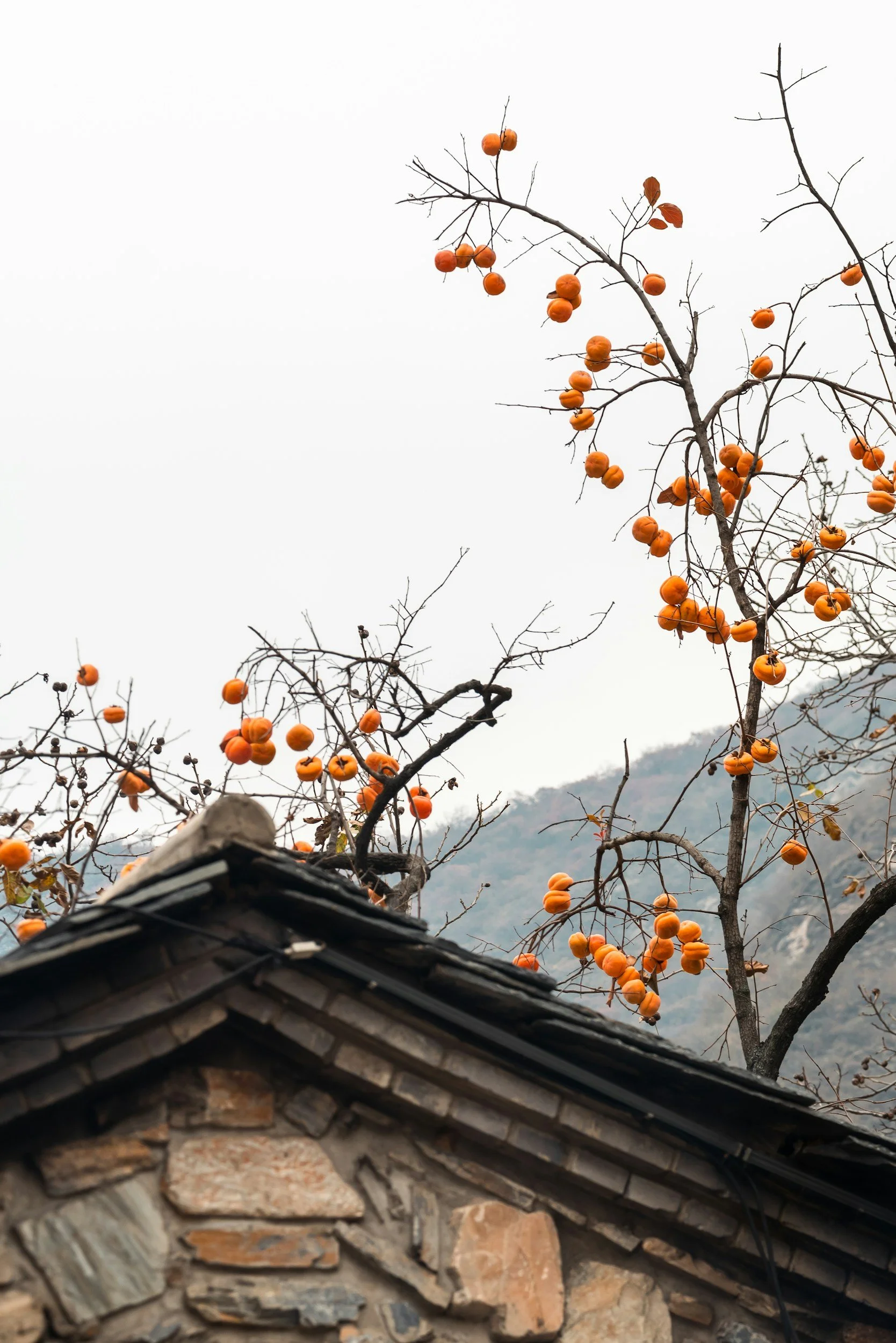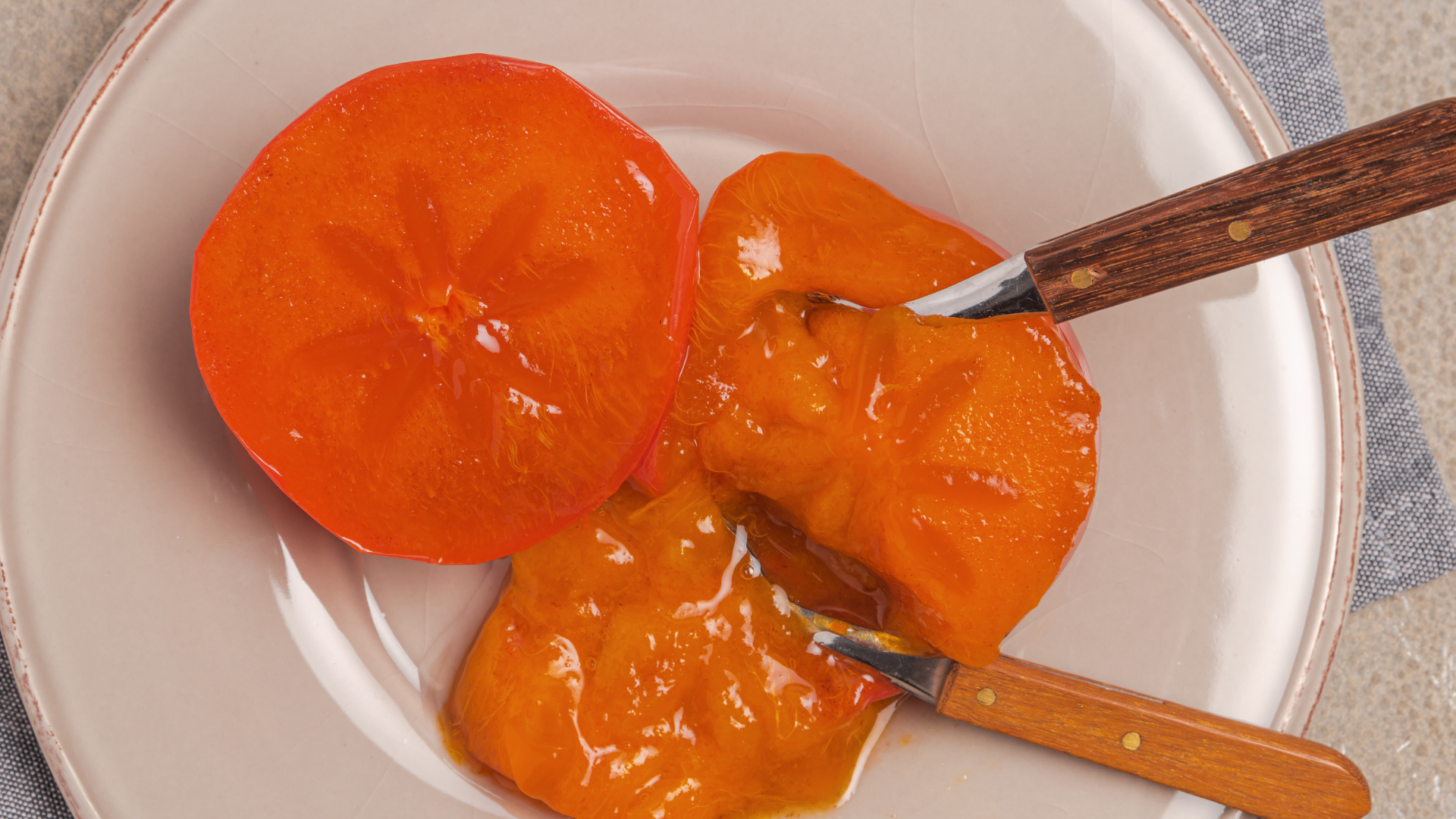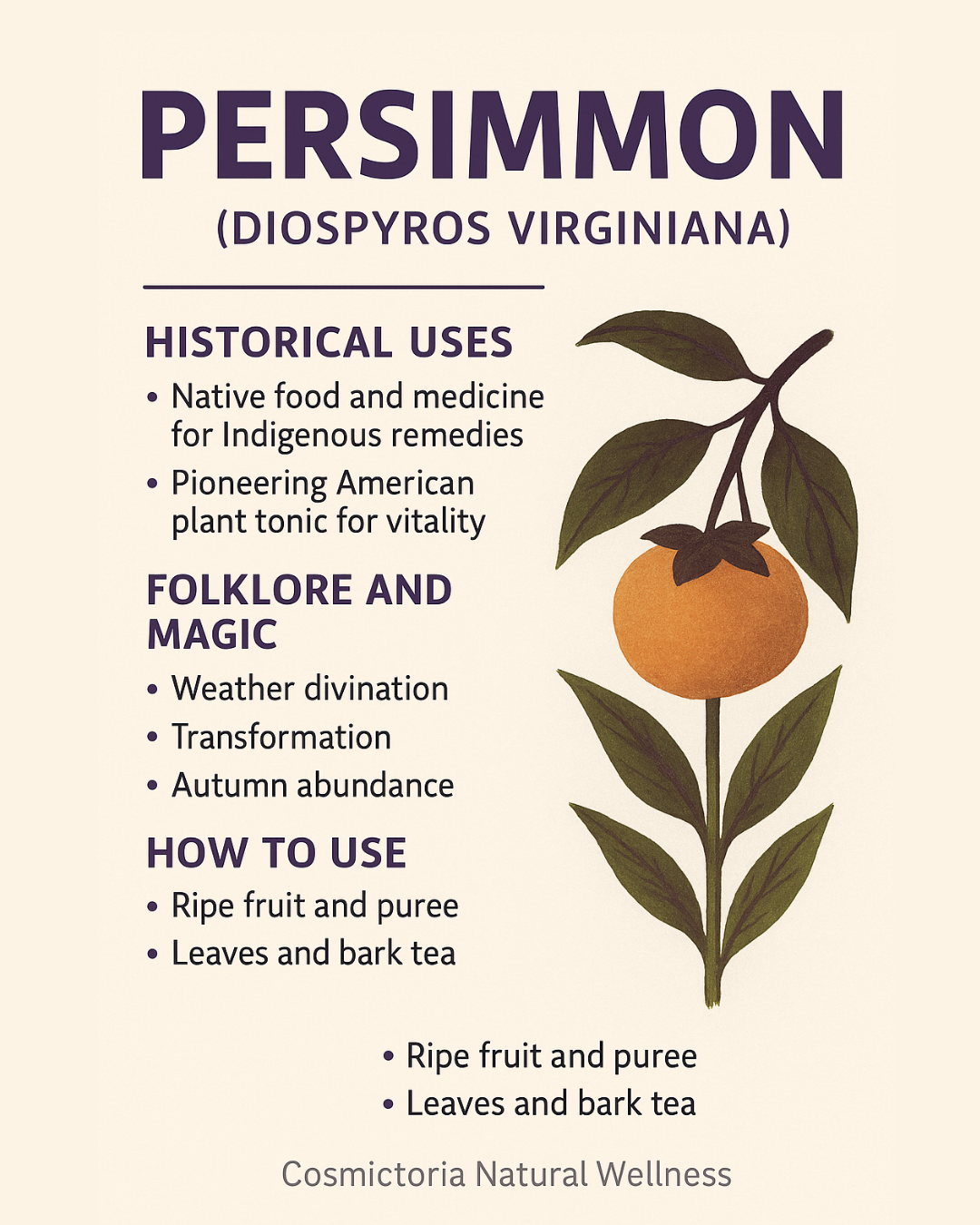Healing Herbs: American Persimmon
With its rich amber fruits ripening just as the forest begins to turn gold, the American Persimmon stands as one of the wild treasures of autumn in the Appalachian region. Known for its sweet, custard-like flavor (once fully ripe!) and its grounding, nourishing properties, this native tree has long been cherished by both people and wildlife alike.
In this article, we’ll explore the deep history, traditional uses, and spiritual symbolism of this humble yet magical tree — a true autumnal gift of the Southern mountains.
What is American Persimmon?
The American Persimmon (Diospyros virginiana) is a small deciduous tree native to the Eastern and Southeastern United States, thriving in woodlands, pastures, and field edges throughout Western North Carolina. It belongs to the ebony family — the same lineage as the black hardwood used for fine instruments and furniture. The name Diospyros translates to “fruit of the gods,” a fitting description for the honeyed sweetness that arrives after the fruit’s famous astringency mellows with frost.
Historical and Indigenous Uses
Indigenous Traditions
For centuries, Native American tribes such as the Cherokee, Creek, and Powhatan revered the persimmon for both its flavor and healing properties. They used the ripe fruit in puddings, breads, and dried cakes for winter storage. Medicinally, unripe fruit and bark were used as natural astringents to treat mouth ulcers, sore throats, and diarrhea. The seeds were sometimes roasted and ground as a mild coffee substitute.
Early American Folk Remedies
Early settlers quickly adopted persimmon into their own folk practices. The fruit’s vitamin-rich pulp was used for digestive support and as a tonic for overall vitality. The bark and inner wood were sometimes brewed as a decoction for fevers, while poultices from the leaves were used to aid wound healing. During the Civil War, persimmon seeds were even roasted and used as a caffeine-free “Confederate coffee.”
Holistic Medicinal Uses
Digestive Health
Persimmon is known for its gentle toning effect on the digestive tract. The tannins in unripe fruit give it a natural astringency, helping to tighten tissues and soothe inflammation when used properly and sparingly. Ripe persimmon fruit supports healthy digestion and provides natural fiber.
Antioxidant & Immune Support
The bright orange color of the fruit comes from high levels of beta-carotene, vitamin C, and polyphenols — compounds that help neutralize oxidative stress and support immune health during the cooler months.
Heart & Circulatory Support
Modern research has shown that persimmon compounds can help maintain healthy cholesterol levels and improve circulation, aligning beautifully with its historical use as a nourishing fall tonic.
How to Use
Ripe American persimmons can be enjoyed fresh, dried, or pureed into smoothies, breads, and puddings. To make a simple persimmon tonic tea, simmer small slices of ripe fruit with cinnamon and ginger for 10–15 minutes.
The bark or leaf can be dried and used sparingly in teas for its astringent quality, though this should only be done under the guidance of a trained herbalist.
Important Note: Unripe persimmons are extremely astringent due to high tannin content — never consume them before they’re soft and fully ripe (often after the first frost).
Folklore and Magic
The American Persimmon carries a wealth of folklore, much of it tied to the rhythms of the seasons and the wisdom of the land.
Weather Divination
Appalachian folklore tells that cutting open a persimmon seed reveals a weather omen for the coming winter. Inside the seed’s white kernel, a spoon shape predicts heavy snow (you’ll be “shoveling”), a fork means mild weather, and a knife foretells bitter cold that “cuts like a blade.”
Symbolism of Transformation
Persimmon embodies the beauty of patience and transformation. The fruit begins harsh and puckering but ripens into sweetness only after frost — a poetic symbol of wisdom earned through experience. Energetically, it’s associated with the solar plexus and sacral chakras, balancing personal power with emotional warmth.
Love & Abundance Magic
In some traditions, persimmon fruit was used in autumn rituals to draw love, prosperity, and harmony into the home — a reminder that sweetness follows surrender.
Sustainability & Safety
Always harvest persimmons ethically — taking only what you need and leaving plenty for wildlife, especially deer, foxes, and birds that rely on this fruit in late autumn. If wildcrafting leaves or bark, gather small amounts from healthy trees and allow for regeneration.
Disclaimer: The information provided here is for educational purposes only and not a substitute for professional medical advice. Always consult a qualified herbalist or healthcare practitioner before using wild plants internally, particularly if pregnant, breastfeeding, or on medication.
In the golden quiet of late autumn, when the air turns crisp and the first frost silvers the fields, the American Persimmon ripens — a reminder that true sweetness comes in its own time. Both a food and a medicine, a folk charm and a teacher, this tree offers nourishment for body and spirit alike.
If you enjoyed learning about Ironweed and Persimmon, stay tuned for the next chapter in the Healing Herbs series — a journey through the roots, leaves, and stories of the wild medicine that grows all around us.


